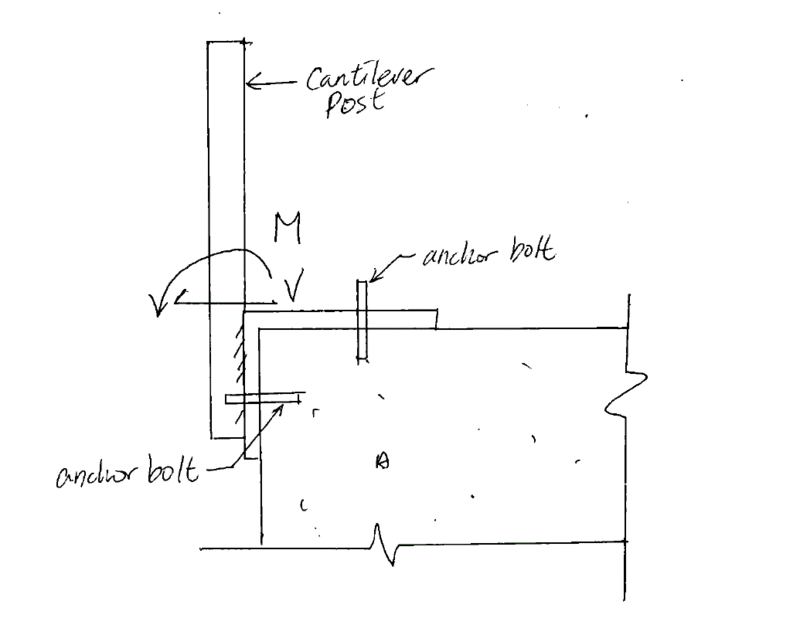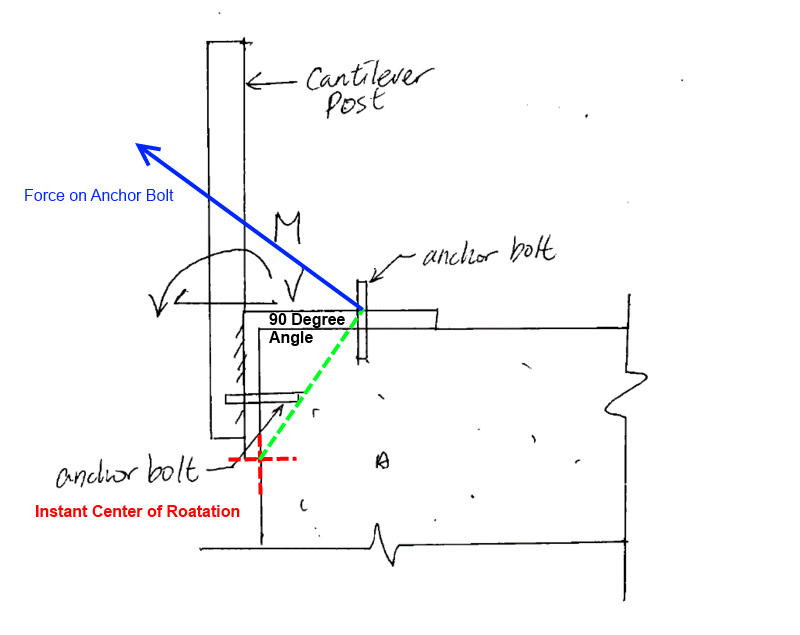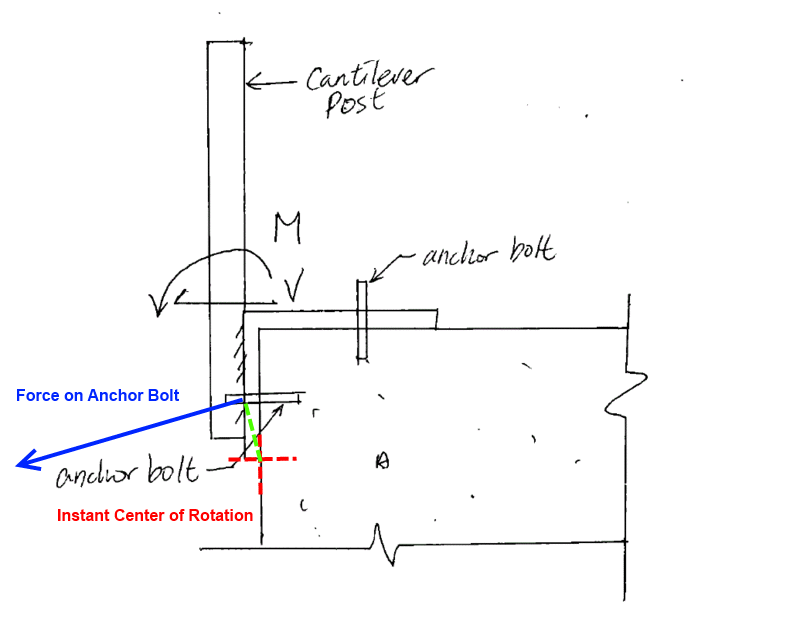ynnuseel0106
Structural
If I have a L-shape bracket with bolts on each face anchored into the supporting R.C. structure subject to a moment and shear load, how can I determine whether the bolts will take tension or shear?


Follow along with the video below to see how to install our site as a web app on your home screen.
Note: This feature may not be available in some browsers.



![[idea] [idea] [idea]](/data/assets/smilies/idea.gif)
![[r2d2] [r2d2] [r2d2]](/data/assets/smilies/r2d2.gif)
Hysterica said:I do have a quick question SlideRuleEra.
How did you know the instantaneous center would be at the base of the angle and not at the corner of the slab?
Hysteria said:If your shear was in a different direction how might the instantaneous center differ?
![[idea] [idea] [idea]](/data/assets/smilies/idea.gif)
![[r2d2] [r2d2] [r2d2]](/data/assets/smilies/r2d2.gif)
